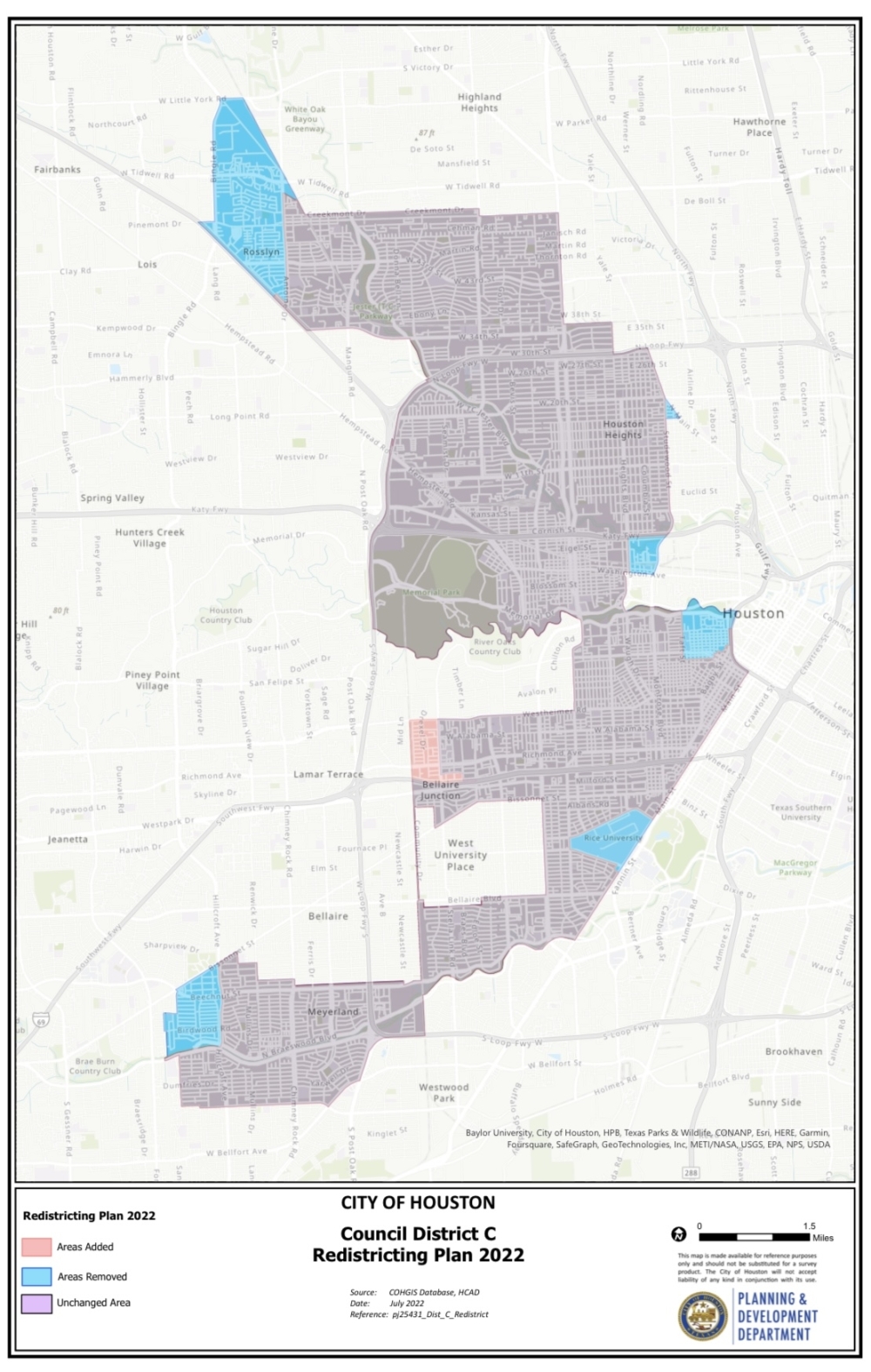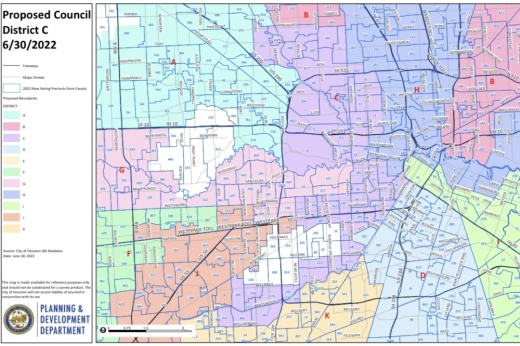The process of redistricting the maps is done every 10 years based on the decennial census data. City Demographer Jerry Wood took on the task of redrawing district lines using 2020 data.
As previously reported by Community Impact Newspaper, the demographer must comply with a series of city guidelines, such as maintaining easily identifiable geographic boundaries, keeping county voting precincts together, avoiding diminishing voting power by demographic concentration or dilution, and preserving incumbent and constituent relations.
Under the proposed map, Freedmen’s Town could move from District C—an area that covers the Heights, Montrose, Garden Oaks and Meyerland areas—to District H, an area that holds Woodland Heights, Northside Village and Northline. According to Wood, District C is overpopulated and needs to decrease in size by about 20,000 people, while District H is underpopulated and has about 35,000 fewer residents than the average district.
Zion Escobar, executive director of Houston Freedmen’s Town Conservancy—a nonprofit that works to preserve and protect the town—said during the meeting that, although she would ultimately like for Freedmen’s Town to stay within District C, she understands the city's reason for moving it out. She said she would not mind seeing the neighborhood placed in District H or District I, an area she said has assets and parts of Freedmen’s Town today.
“Make it right for us no matter what happens,” Escobar said. “Show up for us no matter what happens.”
Other advocates from Freedmen’s Town said they did not want the area to be moved from District C, citing close relations to District C Council Member Abbie Kamin and strong connections to surrounding areas.
Other speakers from District C voiced concerns about Rice University potentially moving to District D—an area that currently covers Midtown, Third Ward and the South Belt. District D also covers The University of Houston and Texas Southern University.
District C resident Kathie Easterly said the university is closely tied to University Place, Rice Village and Rice Alliance, all of which are in District C. According to Easterly, Rice University helped form the University Place Association, which was established prior to Houston creating the Super Neighborhoods.
“It’s always been in District C,” Easterly said. “It isn't just a piece of the border.”
Kamin also said she would like Rice University to be kept in her district because of its “unique and involved” relationships with the surrounding neighborhoods.
However, during the meeting, Mayor Sylvester Turner said he did not think Rice University moving would be a major issue for the area. He said it is important that universities are seen as part of the city of Houston rather than defined by the district they reside in.
“I’m a little taken aback,” Turner said. “[Universities] are not tied to any particular neighborhood; they’re more tied to the city.”
The future of redistricting
As previously reported by Community Impact Newspaper, residents have until 4:45 p.m. on July 29 to submit feedback on the maps, a deadline that was extended. Residents can submit comments, suggestions and alternate map plans.
“If you disagree with these maps that are before us, you also have the opportunity to present maps of your own in terms of how you think a district should be drawn,” Turner said. “You are not restricted to these maps.”
Previously, the city’s redistricting website said the revised map would be brought back to council in August to be voted on. However, during the meeting, City Attorney Arturo Michel said this could now happen in September.
Once voted on, the maps will be ratified in January 2023, and new boundaries will go into effect Jan. 1, 2024.
“I want to emphasize [the map] is proposed; it’s not final,” Michel said at the hearing. “Changes are possible based on the consideration of the input that the public provides.”






